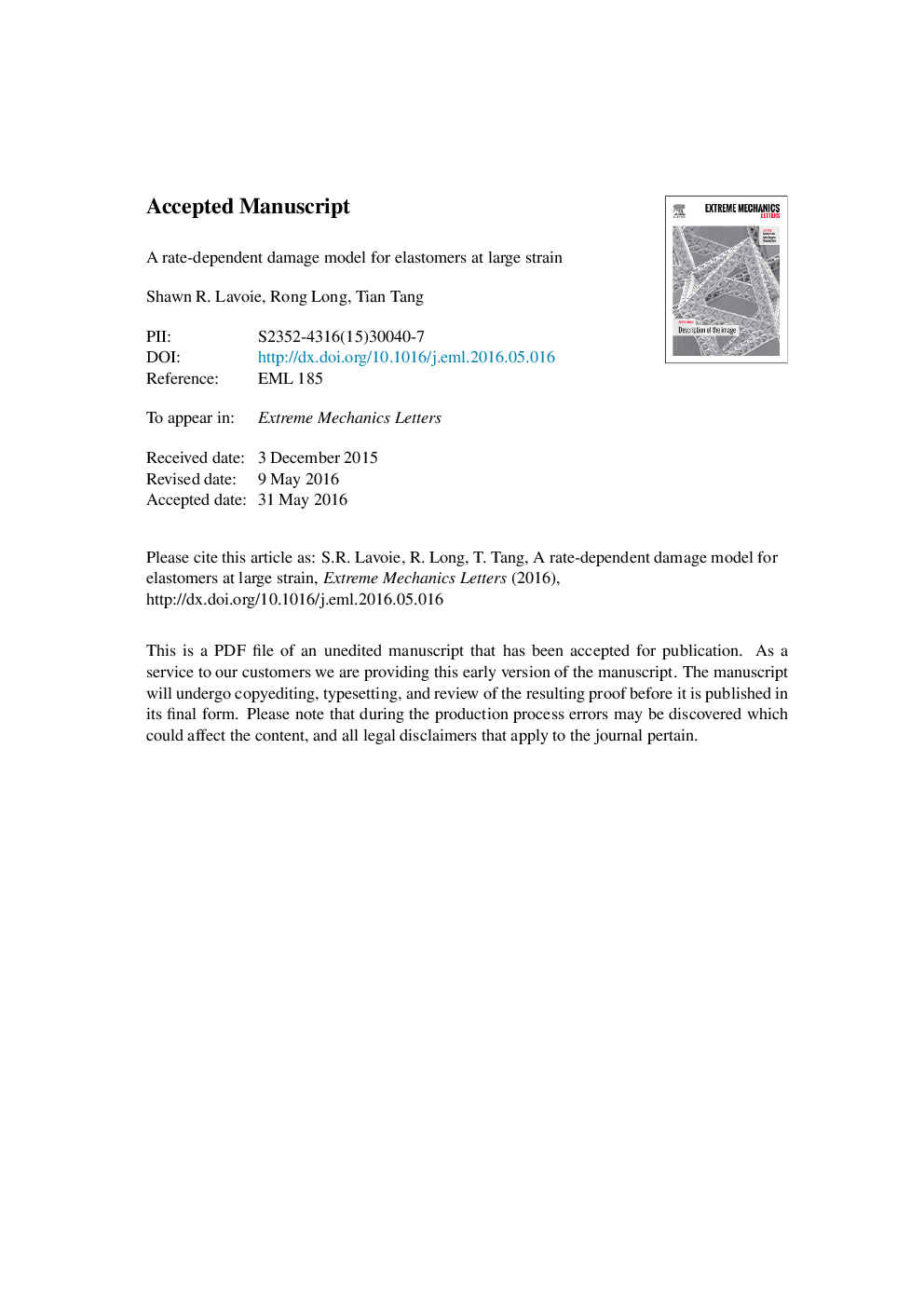| Article ID | Journal | Published Year | Pages | File Type |
|---|---|---|---|---|
| 5014586 | Extreme Mechanics Letters | 2016 | 33 Pages |
Abstract
The ability to predict rate and deformation dependent damage in elastomers is important for many applications. To model the rate dependent damage processes we introduce chain scission, predicted using concepts of mechanochemistry, into hyperelastic constitutive models (Arruda-Boyce as an example). The result is a model capable of handling large strain and rate dependent damage. Additionally, polydispersity is incorporated by considering a distribution of chain lengths, which gives the model the capability to predict progressive material damage. To demonstrate the application of the model, uniaxial tensile deformation with constant extension rates is examined. The tensile stress is found to first reach a peak and then decrease due to scission, and faster rates of deformation result in larger peak stress. Under cyclic loading the polydispersity results in progressive material damage which mirrors the Mullins effect at high deformation rates. In addition, the damage model predicts interesting rate-dependent behavior, such as significant hysteresis during unloading and reloading, as the loading rate is decreased. Finally, the model is shown to be capable of fitting experimental data for a variety of materials.
Related Topics
Physical Sciences and Engineering
Energy
Energy Engineering and Power Technology
Authors
Shawn R. Lavoie, Rong Long, Tian Tang,
